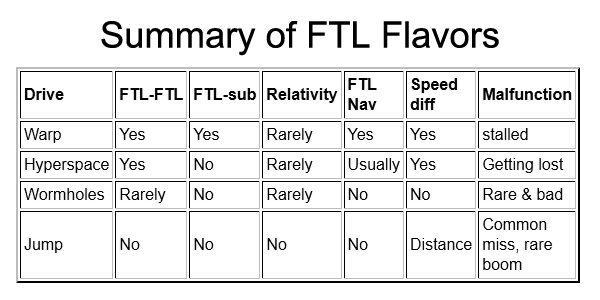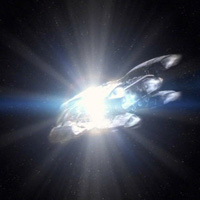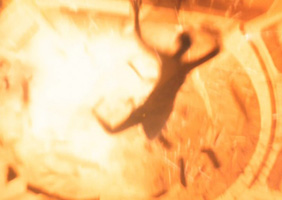![]() I thought I’d take a few minutes to update you about what I’m working on this summer.
I thought I’d take a few minutes to update you about what I’m working on this summer.
Hell Bent is officially in beta. I handed it off to the bulk of the beta readers in the last few days, and I’m working out a handoff for the last one today. Hopefully I’ll get all that feedback by mid/late July and then do my edits in August. If I can get it to the copy editor in the September time frame, I might manage to publish it in November.
Debts of My Fathers (the sequel to Ships of My Fathers) is still in pre-edit limbo. I have the printout ready and waiting, but I haven’t looked at it since I wrapped it up last November. I will very likely do my initial edits to it this summer with an eye towards getting it to beta readers in the early fall. Publication is targeted for around New Years, but at this point, it’s hard to nail it down.
But for now, I’m starting to draft new work. In fact, I’m planning to draft two new novels this summer, if time and brain allows. My goal is to draft two new novels this year, with some hope of stretching that to three, and here I am with the year almost half-gone and not a single one written. Time to dig in.
 The first one, tentatively titled Shattered, is quite the departure for me and might actually be a throw-away novel. Why? It’s a mystery, something I’ve never written before. Then why am I writing it, especially now when I should be trying to establish a rhythm in my publishing career? A couple of reasons. First, my mother is not a sci-fi or urban fantasy fan, and she keeps asking when I’m going to write something she can read. Well, I’m going to indulge her and try to write a mystery.
The first one, tentatively titled Shattered, is quite the departure for me and might actually be a throw-away novel. Why? It’s a mystery, something I’ve never written before. Then why am I writing it, especially now when I should be trying to establish a rhythm in my publishing career? A couple of reasons. First, my mother is not a sci-fi or urban fantasy fan, and she keeps asking when I’m going to write something she can read. Well, I’m going to indulge her and try to write a mystery.
But the other reason is that a number of SF writers recommend that every writer should write a mystery at some point in their career, the earlier the better. Apparently, there’s something to be learned from the way a good mystery lays everything out and yet keeps the reading from seeing the resolution until the characters wrap it up all together. I’m also going to try a few experiments with additional prep work. I won’t say I’m going as far as the dreaded outline, but I’m at least laying down a few details before I type “Chapter 1”.
The second book I hope to draft this summer is the sequel to Hell Bent, tentatively titled Stone Killer. My general goal in writing series is to draft the sequel before publishing the first, or to generalize it, draft N+1 before publishing N. I figure that improves my odds of fixing continuity problems before they go to print since it allows me to spot a problem in N+1 and fix it in N before it’s too late. So, since I hope to hand off Hell Bent to the copy editor around September, that means I’ll want to draft Stone Killer before that.
But if you do the math, you’ll see that’s drafting two full novels in the next two and a half months. Even considering that one of them is a mystery (typically a little shorter, targeting 65-75,000), the total for both novels will be in the range of 140-160,000 words. That’s about three NaNoWriMo’s worth in less than three months, while also trying to wrap up edits to Hell Bent and making my initial edits to Debts of My Fathers.
I honestly don’t know if I can do it, but that’s what I’m aiming for.



 This is the fifth installment in my series on the different flavors of FTL, and this week we’re jumping into… well, jumps. A jump is essentially teleportation over interstellar distances. You set your destination coordinates, hit the switch, and then you’re at the destination. In some stories, these jumps are instantaneous. In others, the jump takes time while you exist in some transitory null-space. That second variation might sound a lot like hyperspace, but the distinction between jumps and hyperspace are in the details.
This is the fifth installment in my series on the different flavors of FTL, and this week we’re jumping into… well, jumps. A jump is essentially teleportation over interstellar distances. You set your destination coordinates, hit the switch, and then you’re at the destination. In some stories, these jumps are instantaneous. In others, the jump takes time while you exist in some transitory null-space. That second variation might sound a lot like hyperspace, but the distinction between jumps and hyperspace are in the details. On the other hand, if “her core filters” are as twisted as Scotty says, they might just blow up when you hit the switch, especially if you’re too close to a planet, moving too fast, or anything else that makes a jump tricky. Who knows what would cause it, but when enough energy to teleport the ship five or ten light years goes awry, it’s not a healthy place to be.
On the other hand, if “her core filters” are as twisted as Scotty says, they might just blow up when you hit the switch, especially if you’re too close to a planet, moving too fast, or anything else that makes a jump tricky. Who knows what would cause it, but when enough energy to teleport the ship five or ten light years goes awry, it’s not a healthy place to be.